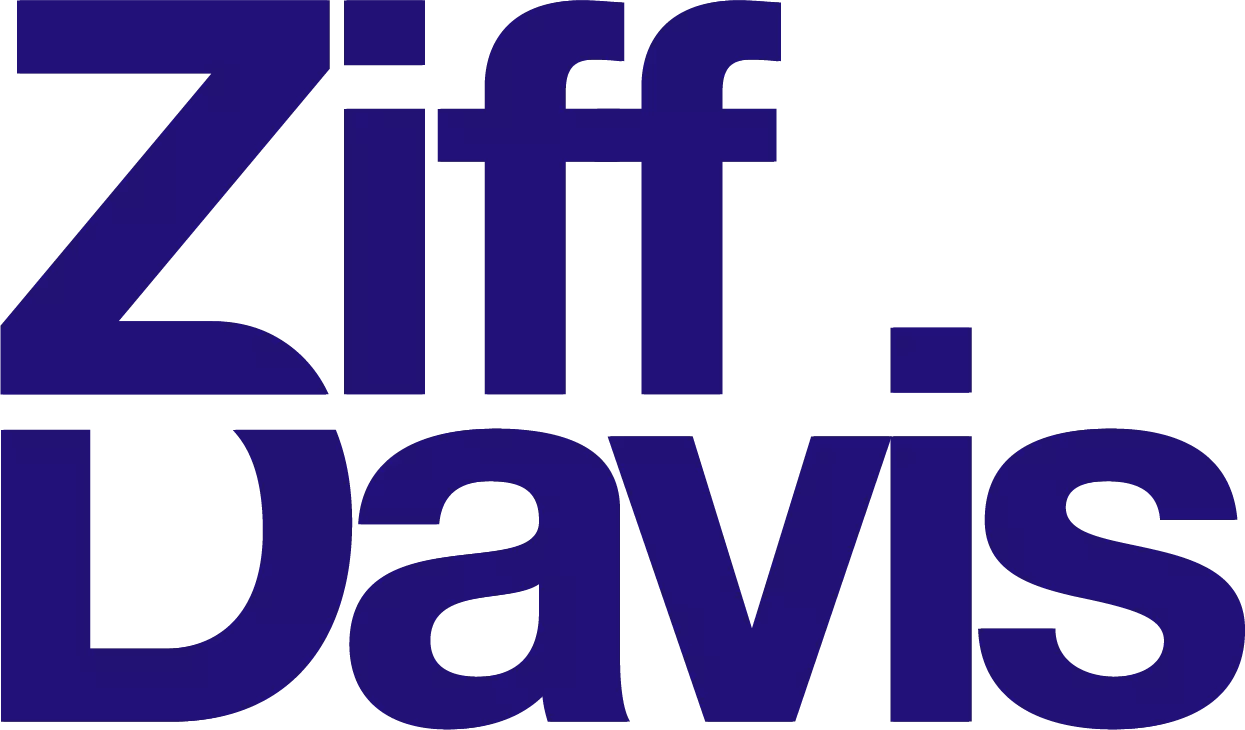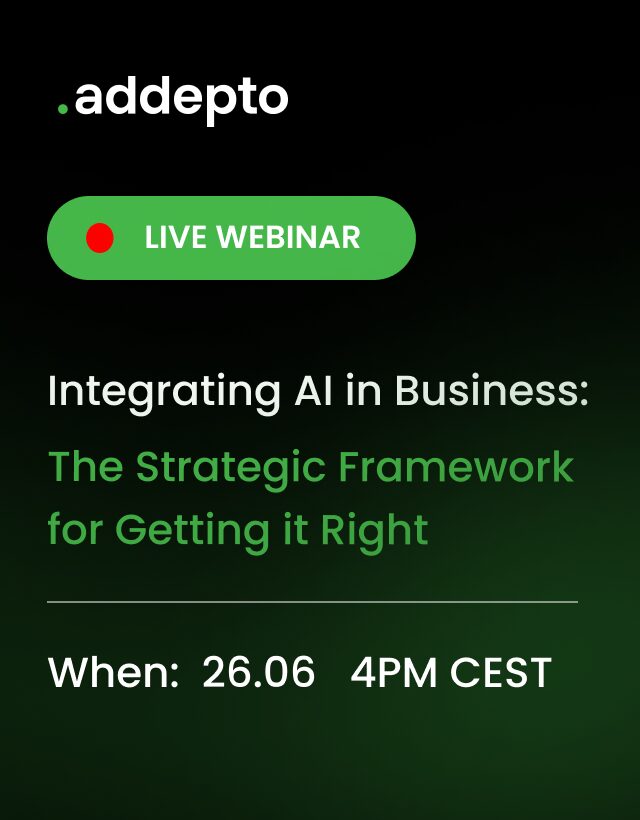
AI Proof of Concept (PoC) Services
Eliminate the guesswork from AI investments. Our rapid POC services help you test, validate, and refine your AI concepts before scaling—saving you time, money, and costly mistakes.
Business Benefits of AI PoC
Why AI projects need validation before development
AI introduces unique uncertainties that traditional software development doesn’t face. Your algorithms might work brilliantly in controlled environments but fail with real-world data variations. Your models might achieve impressive accuracy in testing but require prohibitive computational resources in production.
PoCs address these AI-specific risks by validating core technical assumptions before significant development investment, ensuring your AI strategy is built on solid foundations rather than optimistic projections.
Why do AI projects need validation before development?
Most AI project failures aren’t dramatic explosions – they’re slow, expensive discoveries that the original idea won’t work as planned. Teams spend months building sophisticated interfaces around AI models that can’t deliver the promised accuracy. Or they discover their “clean” data requires weeks of preprocessing that wasn’t budgeted.
PoCs surface these realities early, when pivoting is still affordable and stakeholder confidence remains intact.
What happens when you skip validation?
Every AI project starts with assumptions: about data quality, model performance, user behavior, and integration complexity.
PoCs systematically test these assumptions against reality. Instead of hoping your natural language processing will understand customer queries, you’ll know exactly what accuracy to expect. Instead of assuming your recommendation engine will improve sales, you’ll have concrete performance metrics. This transforms AI from wishful thinking into strategic decision-making.
Can validation actually accelerate your timeline?
PoCs seem like an extra step, but they’re actually a shortcut to success. By validating core AI functionality upfront, you eliminate the back-and-forth of discovering fundamental problems mid-development. Your team focuses on building features that work rather than debugging features that can’t work. The result is faster delivery of functional AI solutions rather than slower delivery of disappointing ones.
How do you gain executive buy-in for AI initiatives?
AI projects often struggle with stakeholder buy-in because the technology feels unpredictable.
PoCs provide concrete evidence of what’s achievable, transforming abstract AI promises into demonstrable capabilities. When executives see actual model performance data, realistic timeline projections, and honest assessments of limitations, they can make informed investment decisions. This transparency builds the organizational trust necessary for successful AI scaling
What value extends beyond your current project?
The most valuable outcome of a PoC isn’t just validating one AI idea – it’s developing organizational fluency in AI implementation. Teams learn to distinguish between viable AI applications and expensive dead ends. They develop realistic expectations about data requirements, model performance, and integration complexity. This institutional knowledge becomes a competitive advantage, enabling faster and more successful future AI initiatives.
Clients that trusted us





















AI PoC process
Our structured 6-stage process transforms your AI concept into a validated proof of concept, providing clear evidence of feasibility and business value before you commit to full development
Initial consultation & scoping
We start with an in-depth conversation about your AI vision, business goals, and current technical setup. This isn’t just a requirements gathering session – we’re also evaluating your data landscape and identifying potential roadblocks early. By the end, you’ll have a crystal-clear project scope with realistic timelines and budget expectations.
Technical feasibility deep-dive
Our engineers dive into the technical details: How clean is your data? What are your system constraints? Where might integration get tricky? We’re looking for both opportunities and red flags. What you get is an honest technical assessment report that tells you exactly what’s possible – and what isn’t.
Rapid prototype development
We create a working prototype that proves your core AI concept actually functions with your data and constraints. No fancy interfaces yet, just the essential AI logic in action. You’ll see your idea working as a tangible prototype that validates the technical foundation.
Real-world testing & validation
Now comes the crucial part – testing how your AI performs when it meets messy, real-world conditions. We throw realistic data volumes at it, test edge cases, and see how it plays with your existing systems. The result? Hard performance data showing exactly how your solution behaves in practice, not just in theory.
Results analysis & business case
We crunch all the numbers and translate technical results into business language. What’s the real ROI? What will scaling actually cost? Where are the risks? You’ll walk away with a comprehensive business case that gives executives everything they need to make an informed investment decision.
Strategic recommendation & next steps
Here’s where we give it to you straight. Should you move forward? Pivot the approach? Try something completely different? Our recommendations are based on data, not optimism. You’ll get clear, actionable guidance on exactly what to do next—with the evidence to back it up.
Our AI PoC Methodology
Our PoC methodology prioritizes speed of learning over code perfection. We focus on rapid experimentation, quick validation, and fast iteration rather than enterprise-ready architecture or comprehensive documentation.
Technology Stack Optimization for PoC Development
- Interactive development environments enable immediate testing and visual feedback, allowing us to validate concepts in hours rather than weeks.
- Pre-trained models and APIs let us test multiple approaches without lengthy training cycles.
- Containerized environments ensure consistency and eliminate technical friction across team members.
- Experiment tracking systems enable rapid comparison of different model architectures to identify the most promising directions.
PoC development uses production-grade tools in an experimental, validation-focused manner. This approach delivers the technical insights and business evidence you need for confident decisions about full-scale AI investment – without the time and cost overhead of production-ready development.
Why work with us
AI Experts on board
Finished projects
We are part of a group of over 200 digital experts
Different industries we work with

Recognitions & awards



Technologies that we use
Our technology stack is always tailored to your specific business requirements and project scope. We don't believe in one-size-fits-all solutions, instead, we select the optimal combination of tools based on your data characteristics, performance needs, integration requirements, and scalability goals. Here are the key technologies and frameworks we commonly leverage for PoC development

Predictive maintenance and quality control
Manufacturing AI has to work in harsh, unpredictable environments where downtime costs thousands per hour. Our PoCs test how well your predictive models handle sensor noise, varying production speeds, and the messy reality of factory floors. We validate whether your quality control AI can spot defects as reliably as your best human inspectors – and identify what happens when lighting changes or new product variants enter the line. By the end, you’ll have concrete data on accuracy rates, false positive costs, and integration complexity with your existing MES systems.

Safety systems and operational optimization
Aviation AI operates under zero-failure tolerance, and so predictive maintenance algorithms must distinguish between normal wear and safety-critical issues across aircraft that fly different routes, carry different loads, and face different weather patterns. Flight optimization systems get validated against scenarios that would challenge experienced pilots: sudden weather changes, air traffic control delays, emergency diversions. The truth is: AI excels in routine operations, but rare events – exactly when pilots need the most support – remain challenging. Safety assessments don’t just measure accuracy; they evaluate failure modes and ensure human oversight remains effective

Portfolio analysis and risk modeling
Investment AI promises enhanced returns through sophisticated algorithms, but the reality is more nuanced. Robo-advisory platforms require validation of their rebalancing logic against actual client outcomes, not just theoretical performance. Credit risk models must prove they can identify potential defaults while avoiding false positives that hurt deal flow.
Due diligence automation systems need testing against complex private equity transactions where traditional metrics don’t capture the full picture. Alternative investment analytics – from real estate valuation models to private debt scoring – face unique challenges when historical data is sparse or market conditions shift rapidly.
The validation process reveals where AI delivers measurable value in deal sourcing, portfolio monitoring, and risk assessment, while identifying areas where institutional expertise and relationship capital remain the primary value drivers.

Risk assessment and fraud detection
Validate AI models for credit scoring, transaction monitoring, and regulatory compliance before full-scale implementation. Our PoCs help financial institutions test algorithmic accuracy, assess bias risks, and ensure regulatory alignment while maintaining data security requirements.

Autonomous systems and automotive intelligence
The automotive industry demands AI that works flawlessly at 70 mph and on factory floors running three shifts. We validate autonomous driving systems against edge cases that would challenge experienced drivers: construction zones with unclear lane markings, cyclists appearing from behind parked cars, and emergency vehicles approaching from multiple directions.
Manufacturing AI gets tested where it counts most – predicting when robotic welders need maintenance before they create defective welds, optimizing paint booth efficiency without compromising finish quality, managing supply chains where a delayed shipment of semiconductors can idle entire production lines. Quality inspection systems must catch microscopic defects that affect long-term reliability while maintaining production speeds that keep vehicles affordable. The challenge isn’t just making AI work in automotive – it’s making it work reliably enough to stake reputations, safety records, and billion-dollar production schedules on the results

Personalization and demand forecasting
Retail AI operates across three critical layers: customer experience, operational efficiency, and strategic intelligence. On the customer front, we validate conversational AI systems that handle inquiries while maintaining brand consistency, recommendation engines that adapt to diverse shopping behaviors, and personalization algorithms that balance relevance with privacy concerns. Operational systems require different validation approaches: computer vision for automated inventory tracking, predictive maintenance for retail equipment and POS systems, and supply chain optimization that coordinates everything from warehouse automation to last-mile delivery. The strategic layer involves demand forecasting models that anticipate seasonal trends and market shifts, dynamic pricing algorithms that respond to competitive pressures, and fraud detection systems that protect revenue without creating customer friction. Integration complexity increases when these systems must work together—chatbots accessing inventory data, pricing algorithms informed by demand forecasts, recommendation systems connected to supply chain availability. Our validation process ensures each technology layer delivers measurable value while maintaining seamless coordination across the entire retail ecosystem

Predictive maintenance and quality control
Manufacturing AI has to work in harsh, unpredictable environments where downtime costs thousands per hour. Our PoCs test how well your predictive models handle sensor noise, varying production speeds, and the messy reality of factory floors. We validate whether your quality control AI can spot defects as reliably as your best human inspectors – and identify what happens when lighting changes or new product variants enter the line. By the end, you’ll have concrete data on accuracy rates, false positive costs, and integration complexity with your existing MES systems.

Safety systems and operational optimization
Aviation AI operates under zero-failure tolerance, and so predictive maintenance algorithms must distinguish between normal wear and safety-critical issues across aircraft that fly different routes, carry different loads, and face different weather patterns. Flight optimization systems get validated against scenarios that would challenge experienced pilots: sudden weather changes, air traffic control delays, emergency diversions. The truth is: AI excels in routine operations, but rare events – exactly when pilots need the most support – remain challenging. Safety assessments don’t just measure accuracy; they evaluate failure modes and ensure human oversight remains effective

Portfolio analysis and risk modeling
Investment AI promises enhanced returns through sophisticated algorithms, but the reality is more nuanced. Robo-advisory platforms require validation of their rebalancing logic against actual client outcomes, not just theoretical performance. Credit risk models must prove they can identify potential defaults while avoiding false positives that hurt deal flow.
Due diligence automation systems need testing against complex private equity transactions where traditional metrics don’t capture the full picture. Alternative investment analytics – from real estate valuation models to private debt scoring – face unique challenges when historical data is sparse or market conditions shift rapidly.
The validation process reveals where AI delivers measurable value in deal sourcing, portfolio monitoring, and risk assessment, while identifying areas where institutional expertise and relationship capital remain the primary value drivers.

Risk assessment and fraud detection
Validate AI models for credit scoring, transaction monitoring, and regulatory compliance before full-scale implementation. Our PoCs help financial institutions test algorithmic accuracy, assess bias risks, and ensure regulatory alignment while maintaining data security requirements.

Autonomous systems and automotive intelligence
The automotive industry demands AI that works flawlessly at 70 mph and on factory floors running three shifts. We validate autonomous driving systems against edge cases that would challenge experienced drivers: construction zones with unclear lane markings, cyclists appearing from behind parked cars, and emergency vehicles approaching from multiple directions.
Manufacturing AI gets tested where it counts most – predicting when robotic welders need maintenance before they create defective welds, optimizing paint booth efficiency without compromising finish quality, managing supply chains where a delayed shipment of semiconductors can idle entire production lines. Quality inspection systems must catch microscopic defects that affect long-term reliability while maintaining production speeds that keep vehicles affordable. The challenge isn’t just making AI work in automotive – it’s making it work reliably enough to stake reputations, safety records, and billion-dollar production schedules on the results

Personalization and demand forecasting
Retail AI operates across three critical layers: customer experience, operational efficiency, and strategic intelligence. On the customer front, we validate conversational AI systems that handle inquiries while maintaining brand consistency, recommendation engines that adapt to diverse shopping behaviors, and personalization algorithms that balance relevance with privacy concerns. Operational systems require different validation approaches: computer vision for automated inventory tracking, predictive maintenance for retail equipment and POS systems, and supply chain optimization that coordinates everything from warehouse automation to last-mile delivery. The strategic layer involves demand forecasting models that anticipate seasonal trends and market shifts, dynamic pricing algorithms that respond to competitive pressures, and fraud detection systems that protect revenue without creating customer friction. Integration complexity increases when these systems must work together—chatbots accessing inventory data, pricing algorithms informed by demand forecasts, recommendation systems connected to supply chain availability. Our validation process ensures each technology layer delivers measurable value while maintaining seamless coordination across the entire retail ecosystem
AI PoC for Measurable Business Impact
Evidence-based investment decisions
Replace assumptions with empirical data about AI feasibility and performance. Our systematic validation provides quantifiable metrics on technical capabilities, resource requirements, and expected business outcomes
Comprehensive risk assessment
Identify implementation challenges before they impact timelines and budgets. Early detection of data quality issues, integration complexities, and performance limitations enables proactive planning and resource allocation.
Accelerated development cycles
Leverage established methodologies and domain expertise to compress validation timelines. Our proven frameworks eliminate common development bottlenecks while maintaining rigorous evaluation standards.
Strategic implementation guidance
Detailed implementation planning that bridges the gap between PoC success and production deployment. Includes resource allocation recommendations, timeline estimates, and phased development strategies aligned with your organizational priorities
Knowledge transfer and capability building
Knowledge sharing throughout the PoC process develops internal expertise in AI evaluation and deployment. Your team gains practical experience in assessing AI opportunities and managing implementation challenges.
Scalability assessment and architecture planning
Evaluation of how AI solutions will perform under increased load, expanded user bases, and growing data volumes. Our analysis includes infrastructure requirements, performance optimization strategies, and cost modeling for different scale scenarios.
Questions about AI PoC
How long does an AI PoC typically take?
Most AI PoCs are completed within 2-6 weeks, depending on project complexity and data readiness. Simple validation projects with clean data can be finished in 2-3 weeks, while more complex scenarios involving multiple data sources or advanced algorithms may require 4-6 weeks. The timeline includes initial assessment, prototype development, testing, and results analysis. We prioritize speed without compromising validation quality – the goal is getting you reliable answers quickly.
What’s the difference between a PoC and a full AI implementation?
PoC validates whether your AI concept is technically feasible and business-viable before committing to full development. It’s a focused validation exercise that tests core assumptions with minimal investment. Full implementation involves building production-ready systems with complete user interfaces, robust security, scalability features, and comprehensive integration with existing systems. Think of PoC as proof that your idea works; implementation is building the complete solution for daily business use.
What data do we need to provide for an AI PoC
Data requirements vary by use case, but we typically need representative samples of your actual business data – not perfect, cleaned datasets. For most PoCs, we can work with 3-6 months of historical data to validate model performance. We’ll assess data quality, identify gaps, and determine if additional data collection is needed. Often, discovering data limitations is a valuable PoC outcome that prevents costly surprises later. We handle all data with strict confidentiality and security protocols.
How do you measure PoC success?
Success metrics are defined upfront based on your business objectives and technical requirements. We typically measure technical performance (accuracy, processing speed, integration feasibility), business impact (ROI projections, efficiency gains, cost reductions), and implementation viability (resource requirements, timeline estimates, risk assessment). Every PoC concludes with clear recommendations: proceed with confidence, modify the approach, or explore alternative solutions. Success means you have the data needed for informed decision-making.

Check out our other services
Subscribe to our newsletter
Get the latest AI insights and be invited to our digital sesscions






